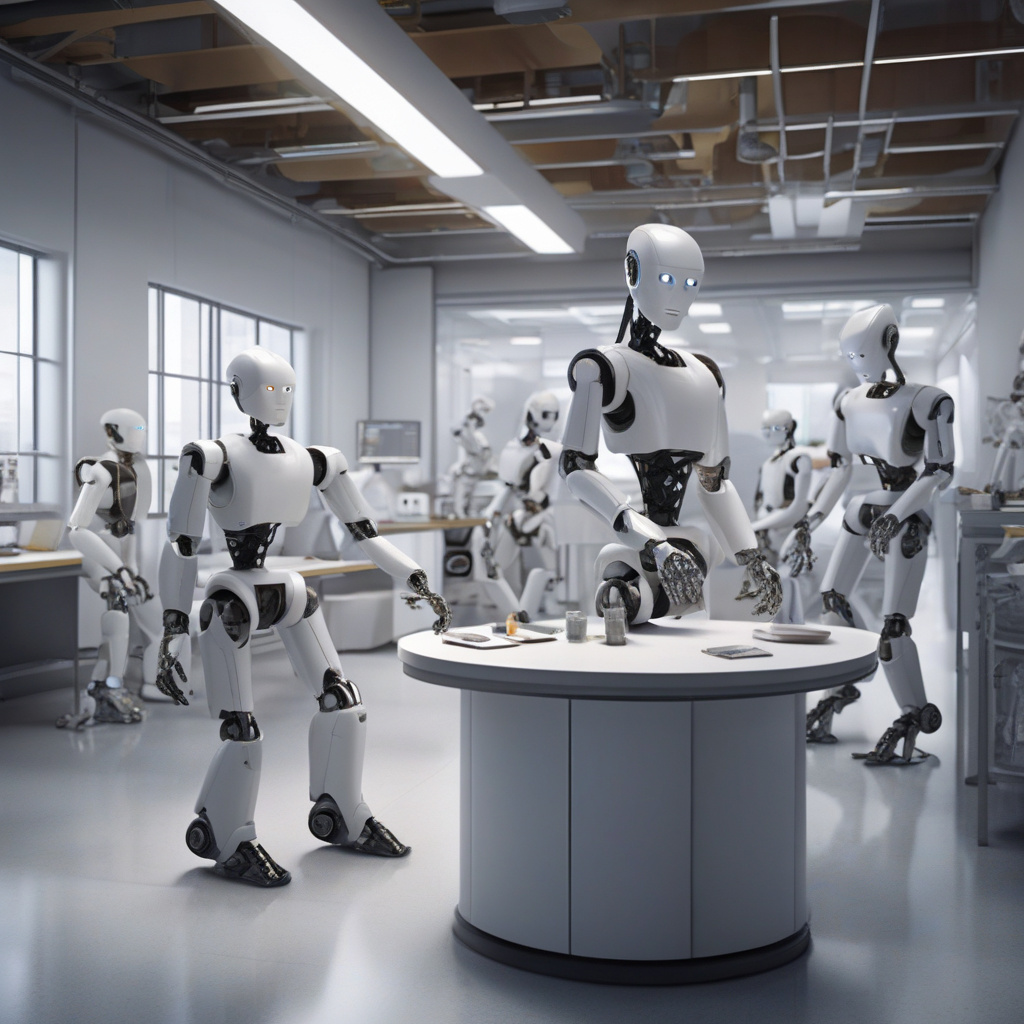Improving Humanoid Robot Safety in the Workplace: Figure AI’s Strategic Plan
In the fast-paced world of integrating humanoid robots into workplace environments, the critical aspect of safety often takes a back seat. Amidst the flurry of announcements from major corporations like Amazon and automotive giants such as Mercedes and BMW about deploying humanoid robots in factories and warehouses, discussions regarding worker safety tend to get lost in the noise. However, one innovative robotics company based in the Bay Area is determined to change this narrative.
Identifying the Issue
The allure of increased efficiency and productivity with the introduction of humanoid robots is undeniable. Still, the potential risks posed to human workers can’t be ignored. Accidents involving robots, especially those with human-like features and movements, can have severe consequences in industrial settings. From collisions to malfunctions, the safety of human employees working alongside robots is a paramount concern that demands immediate attention.
Enter Figure AI
Figure AI, a forward-thinking robotics firm, has recognized the pressing need to enhance safety measures when integrating humanoid robots into workplaces. By acknowledging the current industry oversight of safety protocols, Figure AI is taking proactive steps to address this critical issue head-on with a comprehensive plan designed to prioritize worker well-being without compromising operational efficiency.
The Strategic Approach
Figure AI’s plan to improve humanoid robot safety in the workplace focuses on several key areas:
- Risk Assessment: Before deploying humanoid robots, Figure AI conducts thorough risk assessments to identify potential hazards and implement preemptive measures to mitigate risks effectively. By proactively addressing safety concerns, the company aims to create a secure working environment for human-robot collaboration.
- Sensor Technology: Leveraging advanced sensor technology, Figure AI equips humanoid robots with state-of-the-art sensors capable of detecting and responding to human presence in real-time. These sensors enable robots to adjust their movements and actions to prevent collisions and ensure safe interactions with human counterparts.
- Training and Education: Recognizing the importance of educating human workers on interacting safely with humanoid robots, Figure AI provides comprehensive training programs to enhance awareness and promote best practices. By fostering a culture of safety and collaboration, the company empowers employees to work effectively alongside robots.
- Continuous Monitoring and Improvement: Figure AI implements continuous monitoring systems to track safety performance metrics and identify areas for improvement. By analyzing data and feedback from real-world interactions, the company can refine its safety protocols and enhance the overall safety standards of humanoid robot deployments.
Implications for the Industry
Figure AI’s initiative to enhance humanoid robot safety in the workplace sets a significant precedent for the industry. By prioritizing worker safety and implementing proactive measures, the company not only safeguards human employees but also sets a standard for ethical and responsible robotics integration. As other players in the robotics sector take note of Figure AI’s approach, the focus on safety is expected to become a central theme in future discussions surrounding humanoid robot deployments.
In conclusion, while the excitement surrounding humanoid robots in the workplace is palpable, ensuring the safety of human workers must remain a top priority. Figure AI’s strategic plan to improve humanoid robot safety serves as a beacon of progress in an industry poised for significant growth. By championing safety, innovation, and collaboration, Figure AI is leading the way towards a future where humans and robots can work together harmoniously in a secure and productive environment.

